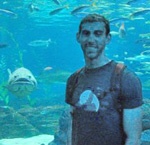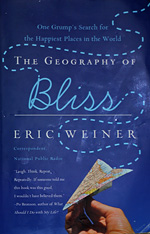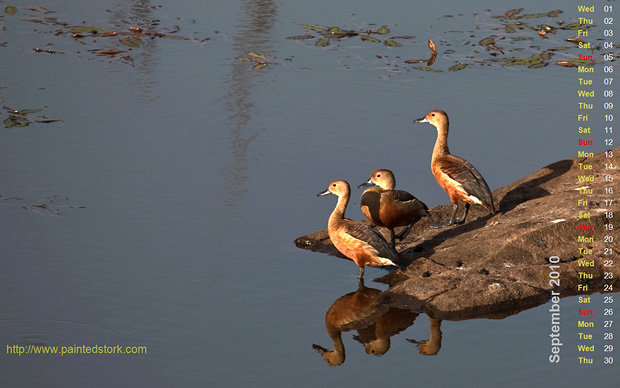Interview with Jason Demant, founder of UnAnchor.com
 I received an email from Jason a few weeks ago introducing me to his plans of selling travel itineraries online. The interesting part of his business plan was to let any writer post an itinerary on the site. The itineraries will be made available for sale on the UnAnchor.com and the writer gets bulk of the revenue from the sale. I had a few questions to Jason on how the whole thing works and how viable is the business model. Here is the Q&A I had with Jason on the idea of UnAnchor.com
I received an email from Jason a few weeks ago introducing me to his plans of selling travel itineraries online. The interesting part of his business plan was to let any writer post an itinerary on the site. The itineraries will be made available for sale on the UnAnchor.com and the writer gets bulk of the revenue from the sale. I had a few questions to Jason on how the whole thing works and how viable is the business model. Here is the Q&A I had with Jason on the idea of UnAnchor.com
UnAnchor is a new travel website with the goal of helping travelers figure out what to do in their next travel destination. Travelers will be able to find high-quality, do-it-yourself travel itineraries detailing what sites to see, how to get around, the best restaurants, hotels, etc.
From a writer’s perspective, it’s a place to write about a travel destination you know well and help out your fellow travelers. What makes UnAnchor different is that each itinerary is for sale starting at $0.99. The writer sets the price on the itinerary and keeps 75% from each itinerary sold.
How do you think your itineraries are better than self researched tour plans that a traveler can make by looking up on the internet? How is it better than guidebooks?
UnAnchor itineraries will solve the issues that researching on the Internet and guidebooks currently have. UnAnchor came about because of my growing frustration with both researching my own travel plans and my frustrations with guidebooks. I’ll go through your question backwards, as that’s how my path to UnAnchor came about.
What I’ve found with guidebooks is that they are a pretty good introduction and offer some helpful recommendations, but they are never complete enough. I always had to supplement the guidebook with additional research online, asking the hostel/hotel staff and asking fellow travelers. I began to wonder why I paid the money for the guidebook to begin with. It was heavy and lugging it around wasn’t the most fun thing to do. In addition, with Lonely Planet specifically, I began running into some bad hotel and restaurant recommendations. Talking with fellow travelers, they also expressed their frustrations with Lonely Planet.
Researching is an extremely time-consuming endeavor. I spend hours upon hours researching how to get to my next travel destination, what to do once I got there and how to get around the city. Most of the sites and information I come across are incomplete, an advertisement masked as a recommendation or just outdated. I always kept thinking to myself that there has to be a better way.
Where I believe UnAnchor solves these problems is first by having an independent expert writing up the itinerary; someone who knows the destination inside and out. Additionally, other people will be reviewing the itinerary, which is UnAnchor’s key to a high-quality product; you’ll quickly be able to assess the itinerary’s quality and see other people’s recommendations that have purchased the itinerary. If something is wrong or out of date, reviewers will point it out. Finally, the writer will always be able to update their itinerary to ensure it does not become outdated. The combination of these aspects is what will make UnAnchor itineraries better than guidebooks and self-research.
There is no template or official guideline to writing an itinerary and I’ve done that on purpose. Sometimes you want information on a particular activity (a hike for example), other times you want information on just one particular city or country and other times you may just want to know the best way to get between two cities.
While there’s no official template, I do have recommended guidelines for the itinerary writer.
The first question I always ask writers to consider is whether or not they would be satisfied with the information they’ve provided at the price they’ve requested. That’s the key. Is the information useful enough to justify the cost? The answer will hopefully always be a resounding yes. And ideally, the traveler will find more information than they even had hoped for.
In addition, the two primary aspects I ask the itineraries to be focused on are
- Give a specific itinerary of what to see in a given destination. Don’t just list the 20 sites in a city with a two-sentence description. Tell the traveler which ones can be missed and which ones shouldn’t. Give a specific order as well so if time is a constraint the traveler sees the best sites.
- Provide clear directions to each location using the most efficient transportation. It’s not easy getting around in a new city. I’ve requested that the itineraries give clear subway, bus and walking directions, so that travelers spend less time getting lost.
Before each itinerary goes live on the site, it goes through a review process. This currently consists of me reading through the itinerary, offering suggestions and ultimately approving the itinerary before it goes live on the site.
Finally, the buyer gets a guarantee. If they’re not happy with the itinerary, they can simply send me an email and I’ll gladly refund the money.
As of now, it’s only online. You can view the itinerary on the website or download a PDF version to your computer. I plan on offering itineraries on your handheld device in the future, as I think this will be the most useful way to use an itinerary. As of now, however, the only way to view the itinerary on your handheld device is by transferring the PDF to your cell phone. Unfortunately, I think only savvy users will be able to figure that out.
The great thing about UnAnchor is that anyone can become a travel writer. Even if you’ve never traveled before, you could write an itinerary for your home town.
What is the incentive for writers to enroll and participate? How much do you expect itinerary writers to earn from their works?
The primary incentive is monetary, with writers keeping 75% from each itinerary sold. In addition, for the first 50 itineraries submitted, I’m offering writers 90% from each itinerary sold.
As for how much writers can earn, the potential is quite high. If an itinerary is well-written and provides extremely helpful information to the traveler about a popular travel destination, I believe the writer could make a good chunk of money.
Nope, I do nothing additional with the itineraries. Writers also do not give up any rights to the itineraries when they are published on UnAnchor. Writers are always free to do whatever they like with their itineraries. It’s your hard work after all.

